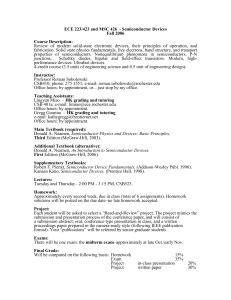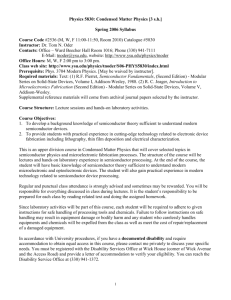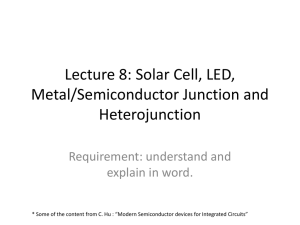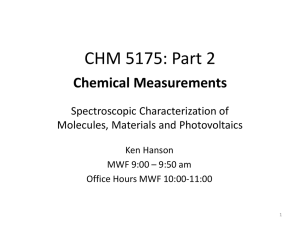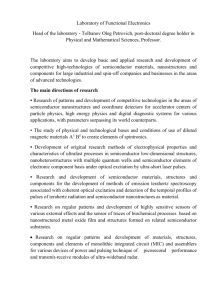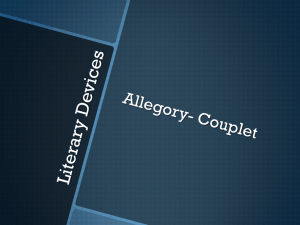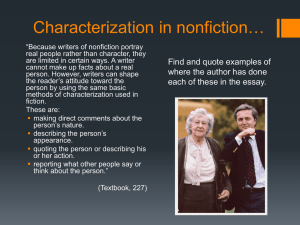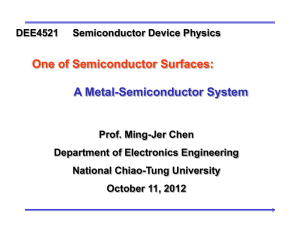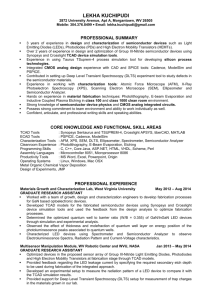Electrical characterization of semiconductor materials and
advertisement
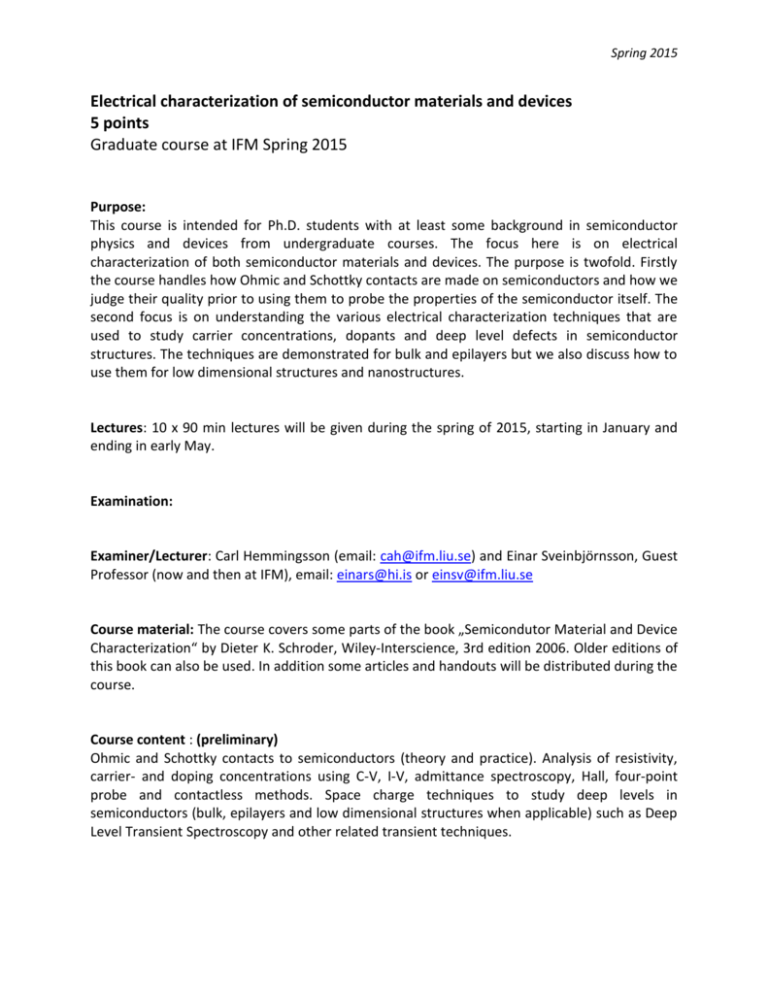
Spring 2015 Electrical characterization of semiconductor materials and devices 5 points Graduate course at IFM Spring 2015 Purpose: This course is intended for Ph.D. students with at least some background in semiconductor physics and devices from undergraduate courses. The focus here is on electrical characterization of both semiconductor materials and devices. The purpose is twofold. Firstly the course handles how Ohmic and Schottky contacts are made on semiconductors and how we judge their quality prior to using them to probe the properties of the semiconductor itself. The second focus is on understanding the various electrical characterization techniques that are used to study carrier concentrations, dopants and deep level defects in semiconductor structures. The techniques are demonstrated for bulk and epilayers but we also discuss how to use them for low dimensional structures and nanostructures. Lectures: 10 x 90 min lectures will be given during the spring of 2015, starting in January and ending in early May. Examination: Examiner/Lecturer: Carl Hemmingsson (email: cah@ifm.liu.se) and Einar Sveinbjörnsson, Guest Professor (now and then at IFM), email: einars@hi.is or einsv@ifm.liu.se Course material: The course covers some parts of the book „Semicondutor Material and Device Characterization“ by Dieter K. Schroder, Wiley-Interscience, 3rd edition 2006. Older editions of this book can also be used. In addition some articles and handouts will be distributed during the course. Course content : (preliminary) Ohmic and Schottky contacts to semiconductors (theory and practice). Analysis of resistivity, carrier- and doping concentrations using C-V, I-V, admittance spectroscopy, Hall, four-point probe and contactless methods. Space charge techniques to study deep levels in semiconductors (bulk, epilayers and low dimensional structures when applicable) such as Deep Level Transient Spectroscopy and other related transient techniques. Spring 2015 Lecture schedule: (preliminary) 1. Ohmic- and Schottky contacts in theory. 2. Ohmic- and Schottky contacts in practice. 3. Resistivity measurements, net carrier concentration from C-V analysis. Effect of temperature, carrier compensation. I-V. 4. Admittance spectroscopy. Hall effect and its use to determine carrier density in bulk and 2DEG layers. 5. Deep level impurities: recombination&generation statistics. 6. Capacitance and current transient measurements. 7. Deep Level Transient Spectroscopy (DLTS) basic concepts. 8. DLTS on troublesome non-bulk structures, like heterostructures, quantum dots and nanostructures. 9. Analysis of surface and interface defects by CV and transient techniques. 10. Buffer lecture. Laboration: Homework (preliminary): Individual project:
